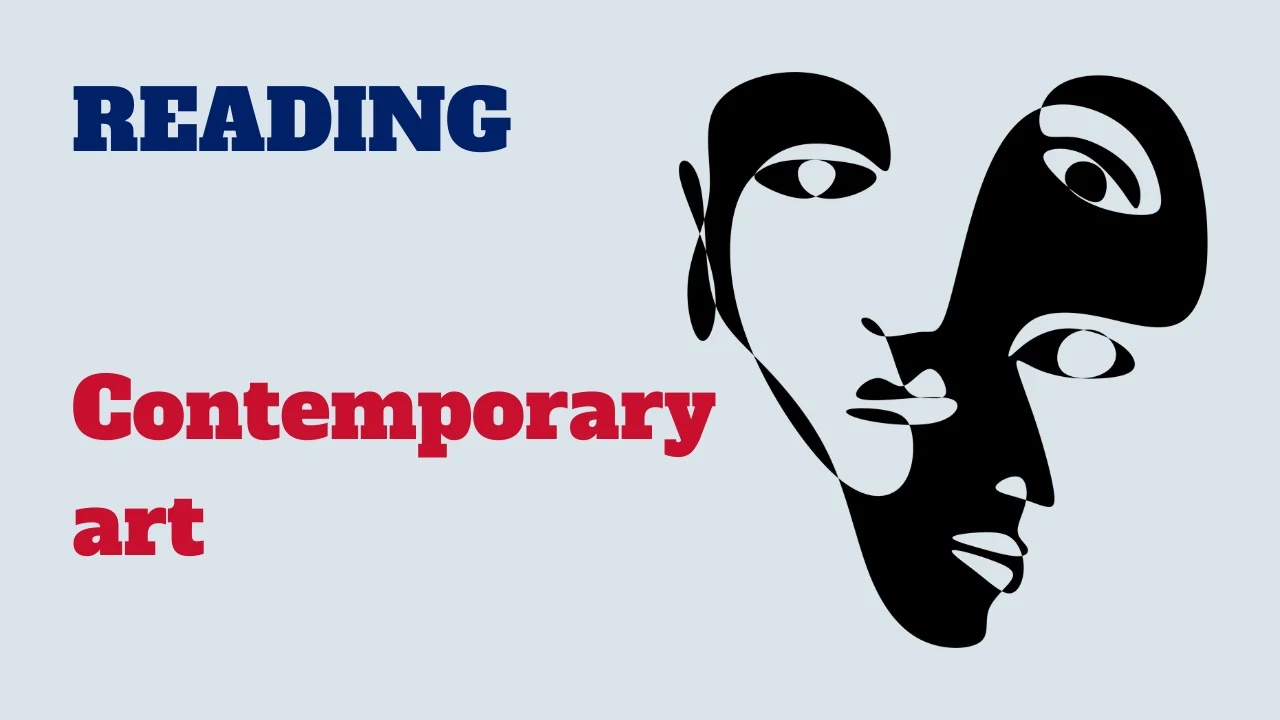Welcome to an exploration of contemporary art! In this reading activity, we’ll study the definition, history, and evolution of contemporary art, examining its significance and distinguishing it from modern art.

From its origins in the early 20th century to its diverse manifestations in the present day, we’ll unravel the complexities of this dynamic and ever-changing art form.
Text: Contemporary art
Contemporary art refers to the art produced from the latter half of the 20th century to the present day. It encompasses a wide range of styles, mediums, and concepts, reflecting the diverse and rapidly changing world in which we live. Unlike modern art, which typically refers to a specific historical period (roughly the 1860s to the 1970s), contemporary art is characterized by its current relevance and engagement with contemporary issues.
One of the defining features of contemporary art is its embrace of a variety of media and techniques. Artists today are not limited to traditional forms like painting and sculpture; they also use photography, video, digital media, performance, and installation art. This multiplicity of mediums allows for a broader exploration of ideas and experiences.
Contemporary art often addresses social, political, and cultural issues, making it a powerful vehicle for commentary and critique. Artists such as Ai Weiwei, Kara Walker, and Banksy use their work to address topics like human rights, racism, and consumerism. This focus on current events and societal issues gives contemporary art its dynamic and often provocative character.
The concept of identity is another prevalent theme in contemporary art. Issues of gender, race, sexuality, and ethnicity are frequently explored, reflecting broader societal conversations. For example, the works of Kehinde Wiley challenge traditional representations of African Americans in art, while Cindy Sherman’s photographs explore the construction of identity through self-portraiture.
Another significant aspect of contemporary art is its global nature. Artists from around the world contribute to the contemporary art scene, bringing diverse perspectives and experiences. This globalization of art fosters cross-cultural dialogues and breaks down geographical and cultural barriers.
Contemporary art also challenges traditional notions of what art can be. The boundaries between high and low art, artist and audience, and art and life are increasingly blurred. Participatory art, where viewers become active participants in the creation or experience of the work, is a notable trend.
Comprehension questions
Congratulations on completing the exploration of contemporary art! By examining the evolution and complexities of this dynamic art form, we gain valuable insights into its significance and impact on society. Through ongoing inquiry and engagement with contemporary artists and artworks, we can continue to appreciate and understand the ever-changing landscape of contemporary art. Remember to stay curious and open-minded as we explore the diverse expressions and interpretations within this vibrant artistic realm.



